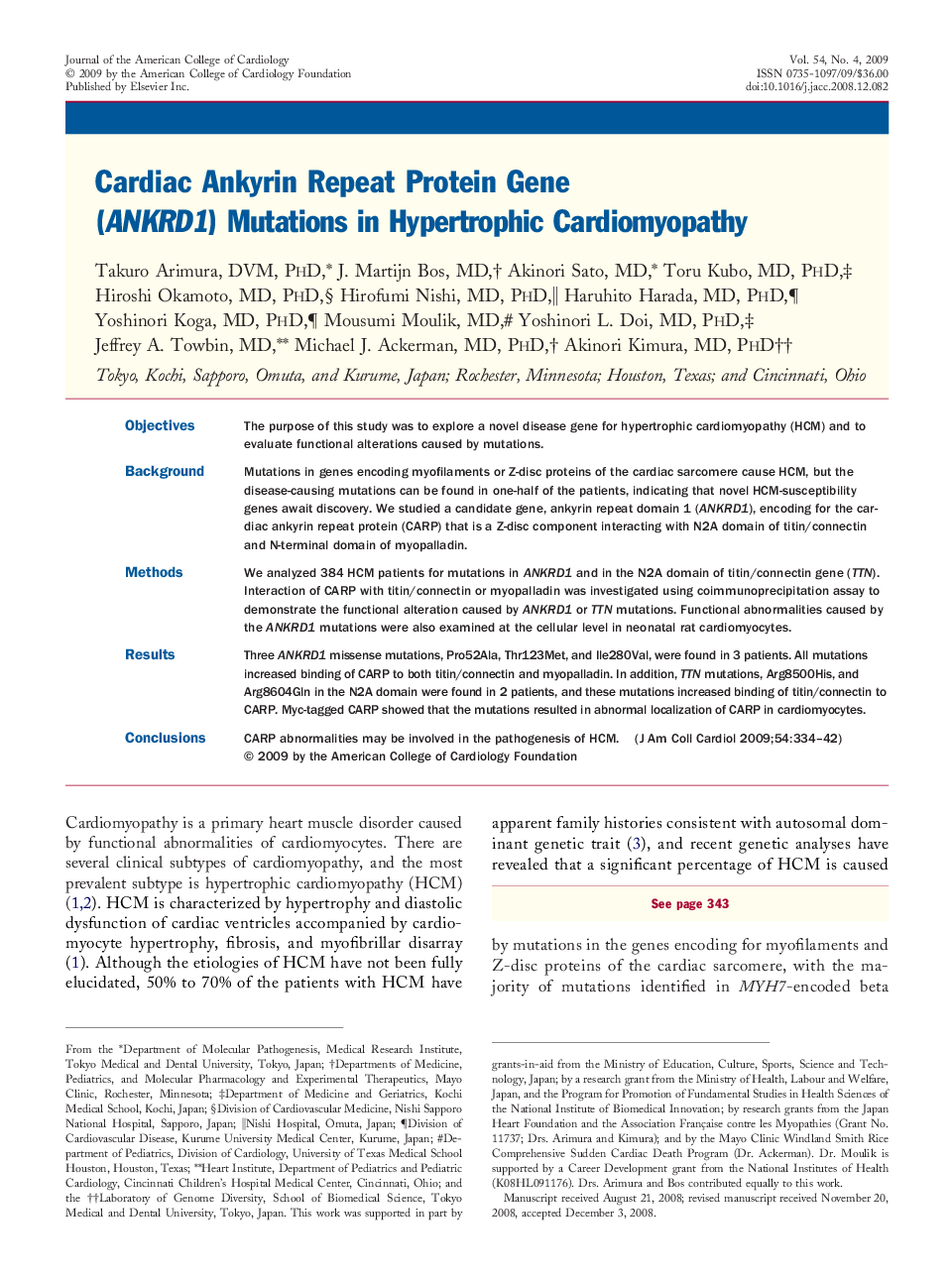| Article ID | Journal | Published Year | Pages | File Type |
|---|---|---|---|---|
| 2950772 | Journal of the American College of Cardiology | 2009 | 9 Pages |
ObjectivesThe purpose of this study was to explore a novel disease gene for hypertrophic cardiomyopathy (HCM) and to evaluate functional alterations caused by mutations.BackgroundMutations in genes encoding myofilaments or Z-disc proteins of the cardiac sarcomere cause HCM, but the disease-causing mutations can be found in one-half of the patients, indicating that novel HCM-susceptibility genes await discovery. We studied a candidate gene, ankyrin repeat domain 1 (ANKRD1), encoding for the cardiac ankyrin repeat protein (CARP) that is a Z-disc component interacting with N2A domain of titin/connectin and N-terminal domain of myopalladin.MethodsWe analyzed 384 HCM patients for mutations in ANKRD1and in the N2A domain of titin/connectin gene (TTN). Interaction of CARP with titin/connectin or myopalladin was investigated using coimmunoprecipitation assay to demonstrate the functional alteration caused by ANKRD1or TTNmutations. Functional abnormalities caused by the ANKRD1mutations were also examined at the cellular level in neonatal rat cardiomyocytes.ResultsThree ANKRD1missense mutations, Pro52Ala, Thr123Met, and Ile280Val, were found in 3 patients. All mutations increased binding of CARP to both titin/connectin and myopalladin. In addition, TTNmutations, Arg8500His, and Arg8604Gln in the N2A domain were found in 2 patients, and these mutations increased binding of titin/connectin to CARP. Myc-tagged CARP showed that the mutations resulted in abnormal localization of CARP in cardiomyocytes.ConclusionsCARP abnormalities may be involved in the pathogenesis of HCM.
